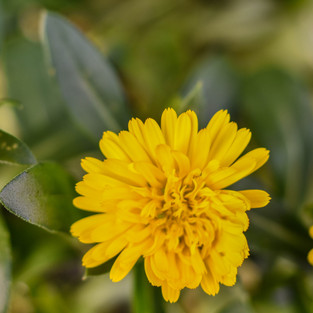Flower Power – lessons from flower photography
- WildWillowWays

- Jan 21, 2019
- 3 min read

Taking photographs of flowers has to be one of the easiest forms of photography, right? Flowers are naturally beautiful as subjects, they come in a variety of shapes, sizes, colours and textures, they sit still and wait for the photographer to fuss around with lenses and filters, they can be photographed in the wild or inside as examples of still life photography. For all these reasons flower photography is a very common and popular form of photography. Beautiful flower photographs are found on calendars, cards, notepaper, they brighten up any surface as wall hangings, they are found in abundance in photography books, magazines and exhibitions and they are used as inspiration for many art projects. Yet is it true to say that flower photography is one of the easiest forms of photography? The very reasons that seem to make this a true statement might also apply to the opposite view. Flowers are easy to find and photograph therefore it is easy to take sloppy, banal shots that are ‘just another flower photograph’. What anyone with a serious interest in flower photography has to do is find different, unique ways of framing flower shots by use different angles, different lighting, variations of background to make the photographs stand out from the crowd of flower photographs and have people stop and look and wonder ‘how was that done?’

I perhaps owe having become a painter to flowers. Claude Monet.
In my flower photography assignment I want to see what being a good flower photographer entails and how taking flower photographs can improve my overall photography skills. I want to try to put into practice some of the skills I have learned already and deepen my understanding of composition, of setting up a good shot, even of doing some editing. I want to become more creative with my camera, try some new techniques. Shooting flowers will, hopefully, give me that opportunity.
I worked both indoors and outside for these shots, using a combination of my kit lens and my ‘nifty fifty’ with and without magnifying filters. I wanted to take shots from different angles, take different parts of the flower, shoot at a distance and also fill the frame with flower in some shots. Some photographs only have a small part of the subject in focus and in other cases I had to make decisions about depth of field. I experimented with moving in close, moving away, moving close again. I even had a go at some abstract flower photography! Afterwards I did some basic editing in Lightroom, adjusting the exposure, temperature, highlights and shadows, contrast and clarity to try to bring out the best in the shots. I discarded many of the shots but felt that the images below provided me with something to work on.
Flower photography also gives an opportunity for more abstract shots and a chance to practise some creativity.
What have I learned from flower photography? Firstly, I have learned that good flower photography isn’t easy. Flowers are naturally beautiful and the camera can’t see as the eye can see so we can easily lose that beauty when trying to convert it into an image. Secondly, I have learned that flower photography, far from being mundane, is actually very enjoyable. It provides lots of opportunities for creativity, for honing skills and for getting out and about and just taking photographs. Thirdly, I have begun to look at my achievements as a photographer rather than at my weaknesses. I am happy to spend time taking lots of shots, discarding those that don’t appeal to me and working on those that do. One main advantage of this type of photography, in a way that portrait photography, or sometimes even landscape photography, doesn’t allow, is that it is easy to go back again and try a different approach, make improvements, look for better ways to capture beautiful flower images. There will always be flowers waiting patiently for a photographer to capture their beauty and show it off to the world!





















































































Comments